If you’ve noticed the leaves of your marigolds turning an unsettling shade of purple, don’t panic! Although this can be a worrisome sight to behold in your garden, oftentimes it is nothing more than a temporary problem with easy solutions. In this blog post, we’ll explore why marigold leaves may turn purple and how to get them back to their former healthy state. With some simple steps and knowledge about basic gardening principles, you’ll have your marigold plants blooming cheerfully again in no time!
Marigold Leaves Turning Purple and Other Problems: What to Do?
1 Wilted Leaves
Wilting can be a sign of extreme stress on your marigolds, such as too much or not enough water. The best course of action is to adjust the watering routine and consider using mulch to moderate soil temperature. [1]
2 Leaves Turning Brown
The most likely cause for leaves turning brown is too much fertilizer. If you suspect this may be the issue, try reducing the amount of fertilizer used and reduce watering frequency.
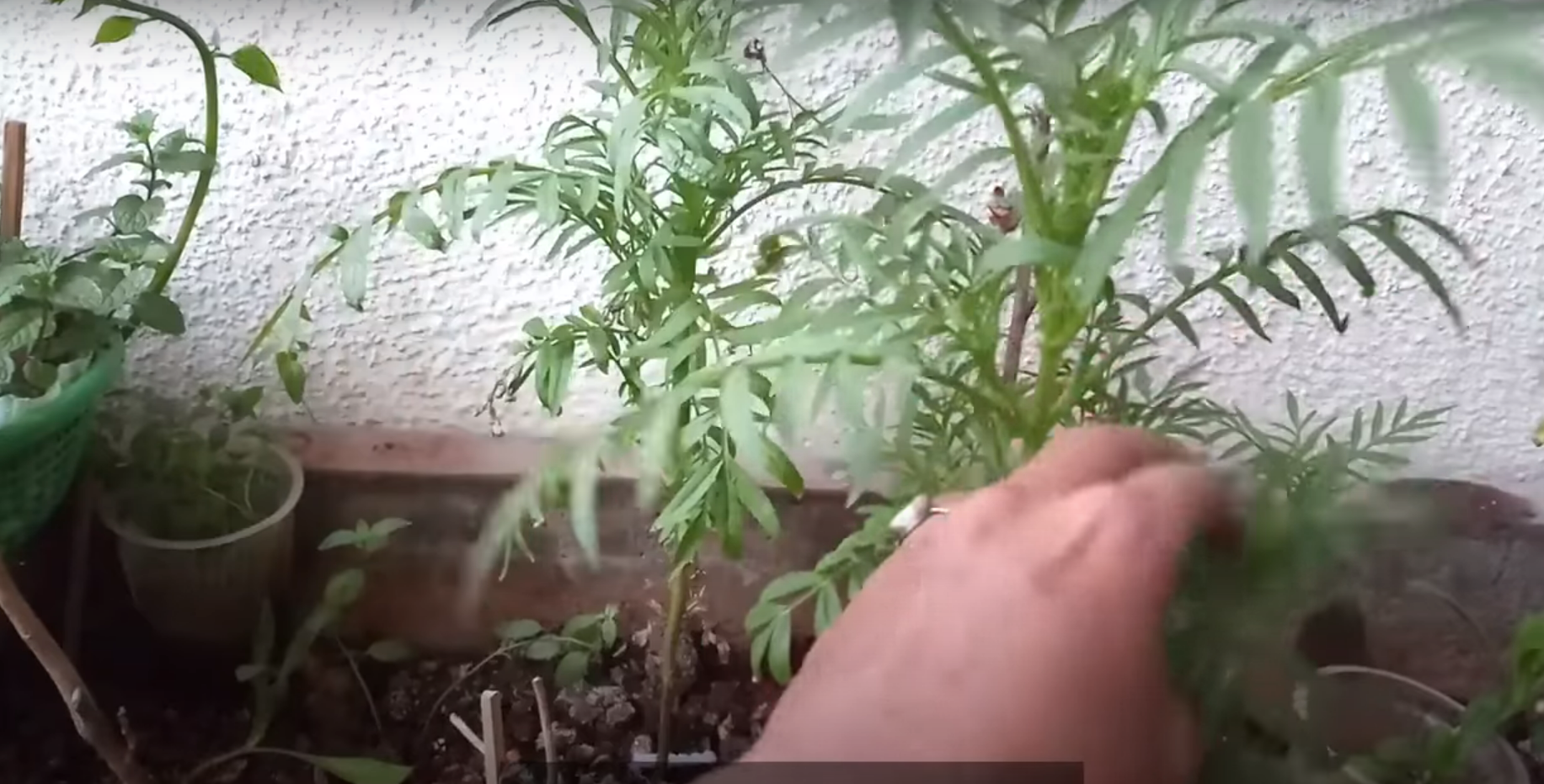
3 Floppy Stems or Leaves
One of the indications that a marigold plant is not getting sufficient water is its leaves turning purple. To reduce this problem, increase the watering frequency and ensure that the soil remains moist but not soggy. Floppy stems and leaves can also indicate an issue with over-watering or poor drainage. If your marigold plants have floppy stems or leaves, it may be helpful to check the soil for excessive moisture before increasing the watering frequency. If too much moisture is present in the soil, you should reduce the frequency or amount of water given to correct this problem.
4 Not Flowering
If your marigold plants are not flowering, it is most likely due to a lack of sunlight or fertilizer. Marigolds need direct sunlight for at least 6 hours a day and benefit from regular applications of fertilizer throughout the growing season. If you have recently moved your marigolds to a new location or haven’t been fertilizing regularly, try increasing their exposure to light and applying a balanced fertilizer. [2]
5 Leaves Turning Purple
If you notice your marigolds’ leaves beginning to turn purple, it’s time to take action. Here are five steps for helping to protect and nurture your marigold plants:
- Check the soil pH – Marigolds grow best in soil that is slightly acidic or neutral (with a pH of 6.0-7.5). If your soil is too alkaline, this could be causing the purple hue in their leaves. You can easily get a soil test kit at any home or garden center and adjust with fertilizer as needed.
- Water wisely – Too much water can cause stunted roots and leaf discoloration, while too little water can affect both foliage color and flowering ability. Make sure your marigolds are getting 1-2 inches of water per week, and adjust accordingly depending on the climate.
- Increase air circulation – Marigolds thrive in a breezy environment with plenty of light and fresh air. If you see that leaves are turning purple, try to promote better air circulation by spreading out plants or pruning off any overly dense foliage.
- Add mulch – Mulching around the base of your marigolds helps retain moisture and discourage competition from weeds, both of which can help keep their leaves healthy and vibrant. A layer of organic material (like straw or wood chips) will do just the trick!
- Rotate crops – Putting a “rest” period between marigold and other plantings is an effective way to combat disease. Move your plants around in the garden every year, or consider planting some flowers in a separate container to avoid the spread of any potential issues.
6 Yellowing Leaves
If the marigold leaves have started to turn yellow, the first step is to check for signs of overwatering or underwatering. Overwatering can result in wilting, yellowing, and even purple discoloration on the leaves. On the other hand, not enough water can also lead to dry and brittle foliage with a yellowish tinge. The best remedy is to water your marigolds regularly and adequately so that their soil remains moist but not soggy. [3]
7 Brown Stems
Brown stems may be due to a fungal disease called stem rot. This is caused by overwatering, poor soil drainage, and inadequate sunlight. To cure this problem, reduce watering, improve soil drainage, and provide enough direct sunlight for the marigold plants. If the stems are still brown after doing these steps, it’s best to remove them entirely so as not to spread the infection further.
8 Brown Spots or Leaf Tips
If you notice brown spots or leaf tips on your marigold leaves, this may be the result of a fungal infection such as Alternaria or Cercospora. These fungi thrive in warm and humid conditions, so it’s important to take preventive measures by keeping the soil moist but not soggy and providing adequate air circulation around the plants. If you see signs of a fungal infection, start treating immediately with a fungicide designed for use on marigolds. Be sure to follow instructions carefully and apply at regular intervals until the problem is resolved. In addition to applying the fungicide, make sure to remove any affected leaves and dispose of them away from your garden.
9 Leggy/Stretched Out Stems
Marigolds are usually compact and bushy, so if you notice your plants have become leggy or stretched out, this is a sign that they may not be getting enough sunlight. Move them to an area with more direct sunlight and prune back any overly long stems to encourage new growth.
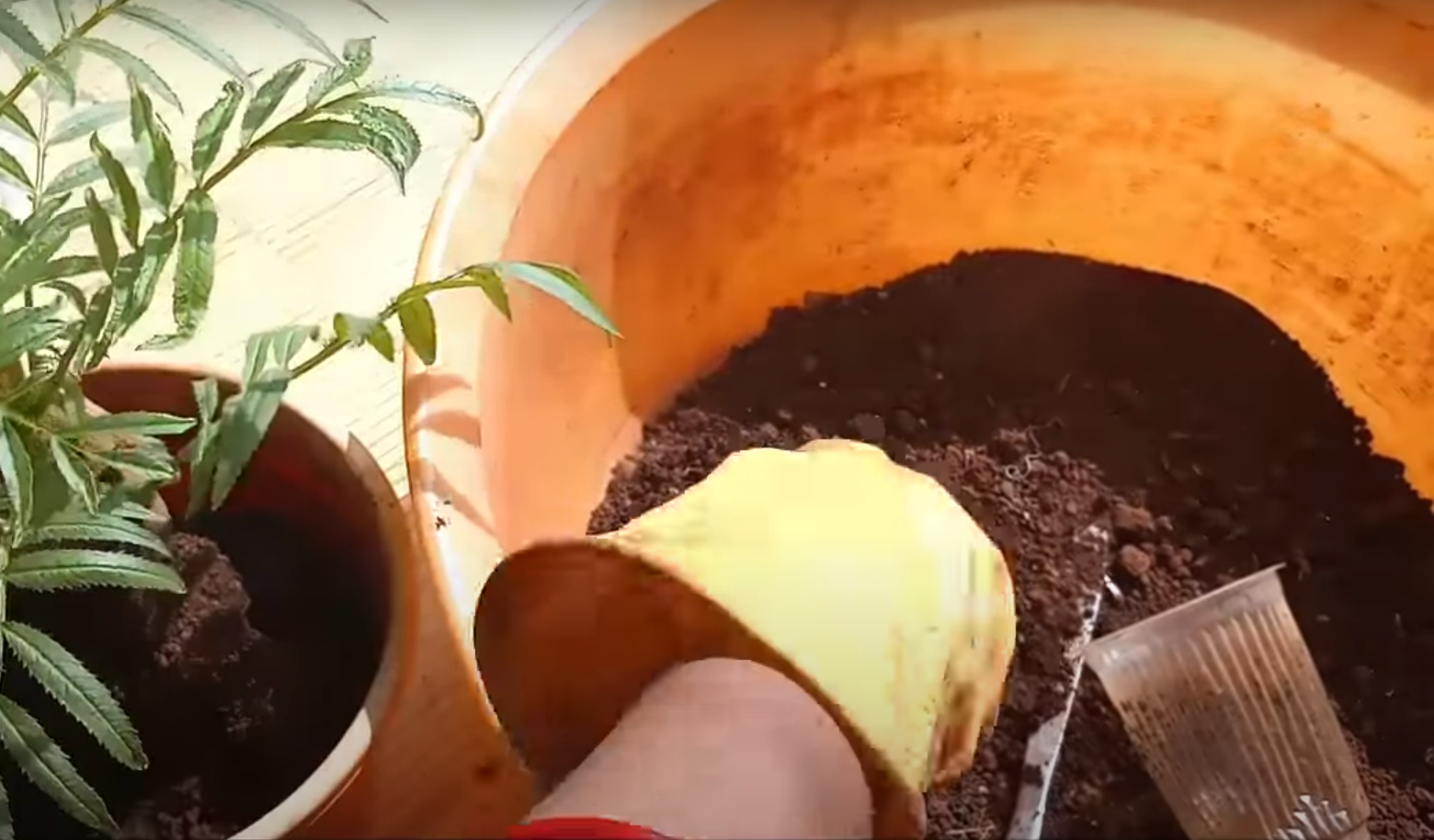
10 Gray Powdery Leaves
Marigold leaves that are turning purple and have a gray powdery coating indicate they may be suffering from Powdery Mildew. This disease is caused by a fungal infection from humid, moist conditions and can spread quickly. To prevent the spread of the fungus, it’s important to act fast.
Here are some tips for what to do:
- Remove infected leaves immediately, as this will help stop the spread of the fungus.
- Increase air circulation around your plants by thinning them out or trimming back any overgrown branches or stems.
- Avoid overhead watering and water early in the day so moisture doesn’t stay on plant foliage overnight where it can promote fungal growth.
- Apply a fungicide to the plant foliage as soon as you see signs of infection. Follow all instructions on the label when applying fungicides.
- Amend your soil with organic matter such as compost or peat moss, which can help promote better drainage and reduce humidity levels in the soil.
- Place stones at the base of plants to provide extra drainage for water run-off.
- Control weeds around your marigolds as these can also compete for nutrients and promote fungal growth due to their growing in close proximity to each other.
- Monitor your marigolds regularly so that any further signs of disease can be treated promptly before it gets out of hand.
- Practice preventative measures such as choosing disease-resistant varieties of marigolds and planting them in an area with plenty of sunlight and air circulation.
- Seek advice from a professional or your local Extension office if the infection persists despite treatment attempts. [4]
11 Speckling on Leaves
Another symptom of marigold leaf discoloration is the presence of speckling on leaves. If you notice tiny yellow or white spots, it is likely from a fungal disease. Fungal diseases can spread quickly, so it’s important to act fast to prevent it from spreading further and affecting other plants in your garden. The best way to treat fungi-related issues on marigolds is by spraying the plant with a fungicide. Make sure that the product contains active ingredients like chlorothalonil or copper oxychloride for effective results. Regularly clean up any debris around the affected plant as well as prune away dead foliage that may be harboring pathogens.
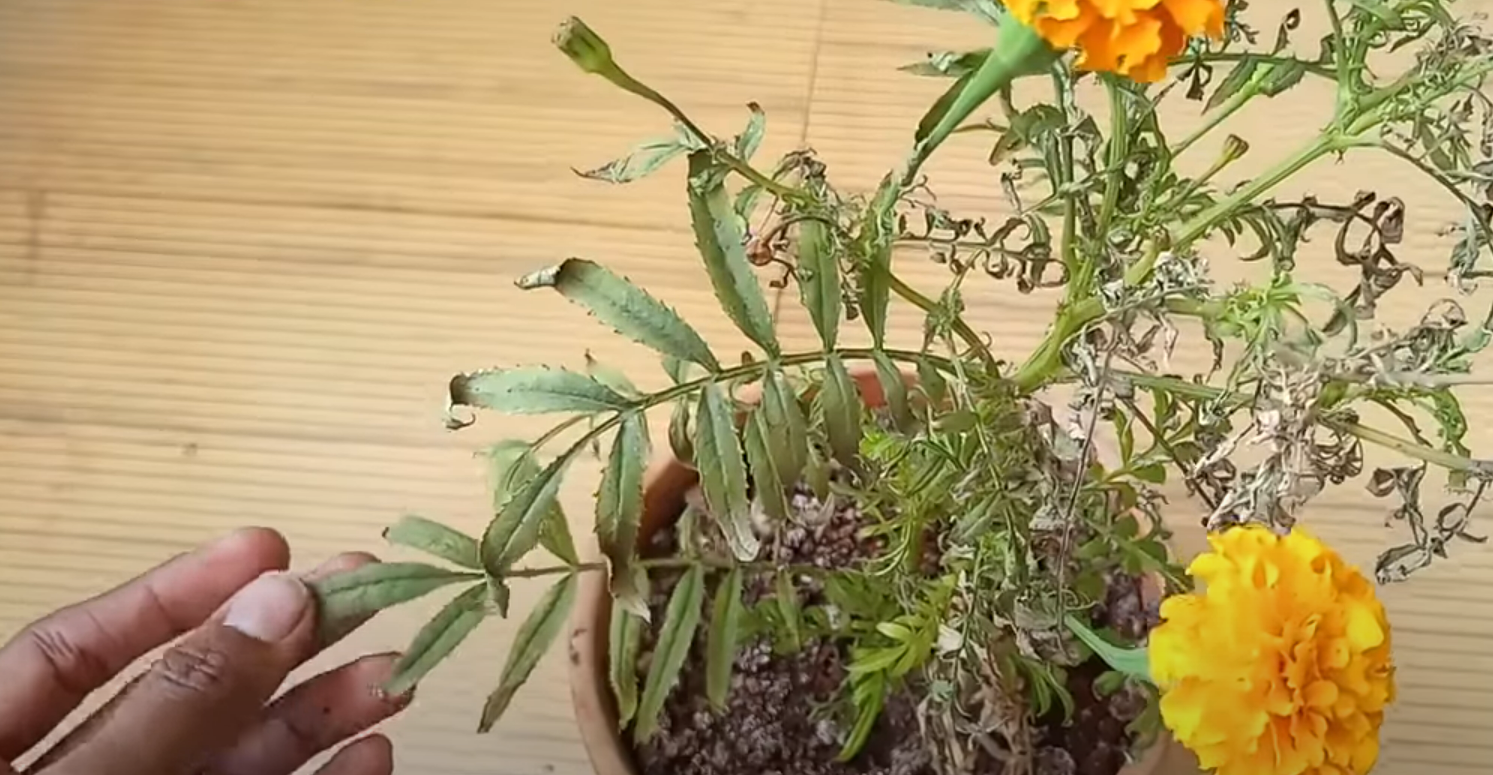
12 Black Spots on Leaves
Another common issue that can cause marigold leaves to turn purple is black spots. If you notice dark, angular shaped marks on the foliage of your marigolds, it could be a sign of black spot disease. This fungal disease is caused by the fungus Diplocarpon rosae and affects roses as well as other plants like hollyhocks. To treat this problem, use a fungicide with active ingredients such as copper hydroxide or sulfur for best results. Additionally, make sure to keep the area around your plant free from any debris or weeds that may serve as breeding grounds for pathogens.
13 Curly or Distorted Leaves
If you find your marigold leaves curling or turning purplish-brown, it’s likely a sign of nutrient deficiency. Too much nitrogen, or an insufficient amount of phosphorus and potassium, are usually the cause behind this issue. To fix it, try implementing soil amendments like compost to provide better nutrition for your marigolds. You should also check if the plant is receiving too much sunlight; depending on where you live, it might be best to give the plant some shade so it doesn’t dry out in the heat of summer.
14 Holes in Leaves
If you find small holes in the marigold leaves, this is often a sign of insect damage. The most common culprits are slugs or caterpillars. To get rid of them, you can try sprinkling some diatomaceous earth around the base of the plant, or laying out sticky traps to catch any roaming insects. You should also look into natural remedies like neem oil and garlic sprays that can help repel pests without harming your plant. [5]
How Do You Tell If Marigolds Are Dying?
In order to determine whether or not your marigolds are dying, it’s important to look at the overall condition of the plant. Look for wilted or yellowing leaves, brown spots on the foliage, and discolored petals. If a significant number of leaves have turned purple, this is usually an indication that something is wrong with the plant. Inspect the soil around your marigold; if there are patches of fungus growing in the dirt, this could be causing your marigold leaves to turn purple. Additionally, check for signs of insects such as aphids or whiteflies—these can often cause discoloration in plants.
By following these simple steps, you should be able to get your marigolds back on track and keep their leaves from turning purple. With proper care and attention, your marigold plants should thrive and bring you a beautiful display of color!
Why Do My Marigolds Have Purple Spots?
If you’ve noticed purple spots on the leaves of your marigold plants, it could be a sign of an underlying issue. Marigolds are usually tolerant to disease and pests but can still suffer from various problems such as viral infections, nutrient deficiencies, or fungal infections.
Other causes of marigold purple spotting include nutrient deficiencies, fungal infections, or insect damage. If the spots have a yellow halo around them, it could be a sign that your plants are suffering from nitrogen deficiency; if they’re black and sunken in the center, they may indicate an infection of Alternaria Leaf Spot or Botrytis Blight. Additionally, some caterpillars can cause marigolds to develop purple spots on their leaves by feeding on them. [6]
How Long Do Marigold Plants Last?
Marigolds are annual plants, meaning they will last for one growing season. Depending on the type of marigold you have planted, the life span of the plant can be anywhere from 8 to 16 weeks. If you notice that your marigolds are starting to turn purple before this time period has ended, it is likely due to environmental stress or disease and not because the lifespan has been reached.
If you want to extend the life of a marigold plant, make sure to provide adequate water and nutrients throughout its lifespan. Proper soil drainage and exposure to indirect sunlight can also help prolong their lifetime so that they don’t suffer from environmental stresses which could cause premature death. Additionally, pruning off any dead or dying leaves and flowers can help encourage new growth which in turn will extend the life of your marigold plant.
FAQ
How do you revive a dying marigold plant?
If your marigold plant appears to be dying, take a look at the leaves. If they are turning purple, it could be a sign of too much nitrogen in the soil or that the plant is not getting enough sunlight. To revive it, you can try adding a fertilizer with more phosphorus and less nitrogen, or providing additional light or shade to balance the amount of sun. You may also need to water it more frequently if it’s dry. Finally, make sure there are no pests attacking your marigold plant; insects such as aphids and thrips can cause its leaves to turn purple. If you find any pests, use an appropriate insecticide to get rid of them.
Why are my marigold leaves turning silver?
Marigold leaves can turn silver due to a condition called iron chlorosis. This occurs when the plant is unable to take up enough iron from the soil, causing its foliage to become yellow or pale green with silver patches. To fix this issue, you should apply an iron-based fertilizer that’s specifically designed for marigolds. Additionally, you may need to check the pH of your soil; if it’s too high (alkaline), it can reduce the availability of iron and other nutrients for your plants. You can lower the pH by adding mulch or compost and making sure that your marigolds are getting enough water.
What causes marigold leaves to turn black?
The main cause of purple or black marigold leaves is a fungal infection known as Alternaria. This fungal disease can be spread by wind or water and will often attack marigolds that are stressed due to hot temperatures, excessive moisture, or poor soil fertility. Unfortunately, once infected the damage done cannot be reversed and the plant may die if left untreated.
What is phosphorus deficiency in marigolds?
Phosphorus deficiency in marigolds causes the leaves to turn purple or black. This happens when there is not enough phosphorus in the soil for the plant to absorb, which can be caused by poor drainage, low soil fertility, or a lack of compost and fertilizer.
Useful Video: 5 most important things to know about marigold | Organic garden | e URBAN ORGANIC GARDEN
Conclusion
If the marigold leaves are turning purple, it is important to act quickly and determine the cause. Generally, this discoloration can be caused by either environmental or cultural factors. If the discoloration is related to an environmental factor such as pH levels, sunburn, or stress from overwatering, adjusting your care practices to better meet the needs of your plants should solve the problem. However, if the cause is a fungal infection like powdery mildew or rust, then you will need to apply fungicide treatments in order to get rid of the issue. In any case, understanding why your marigolds’ leaves are turning purple is essential for managing them successfully over time and ensuring that they remain healthy and vibrant for years to come.
References:
- https://www.allaboutgardening.com/marigold-problems/
- https://gardenaider.com/marigold-leaves-turning-purple/
- https://rocketsgarden.com/marigold-leaves-turn-purple/
- https://www.torontomastergardeners.ca/askagardener/small-regular-purple-dots-on-my-marigold-seedlings/
- https://plantcarer.com/marigold-leaves-turning-purple/
- https://plantworksnyc.com/marigold-leaves-turning-purple/







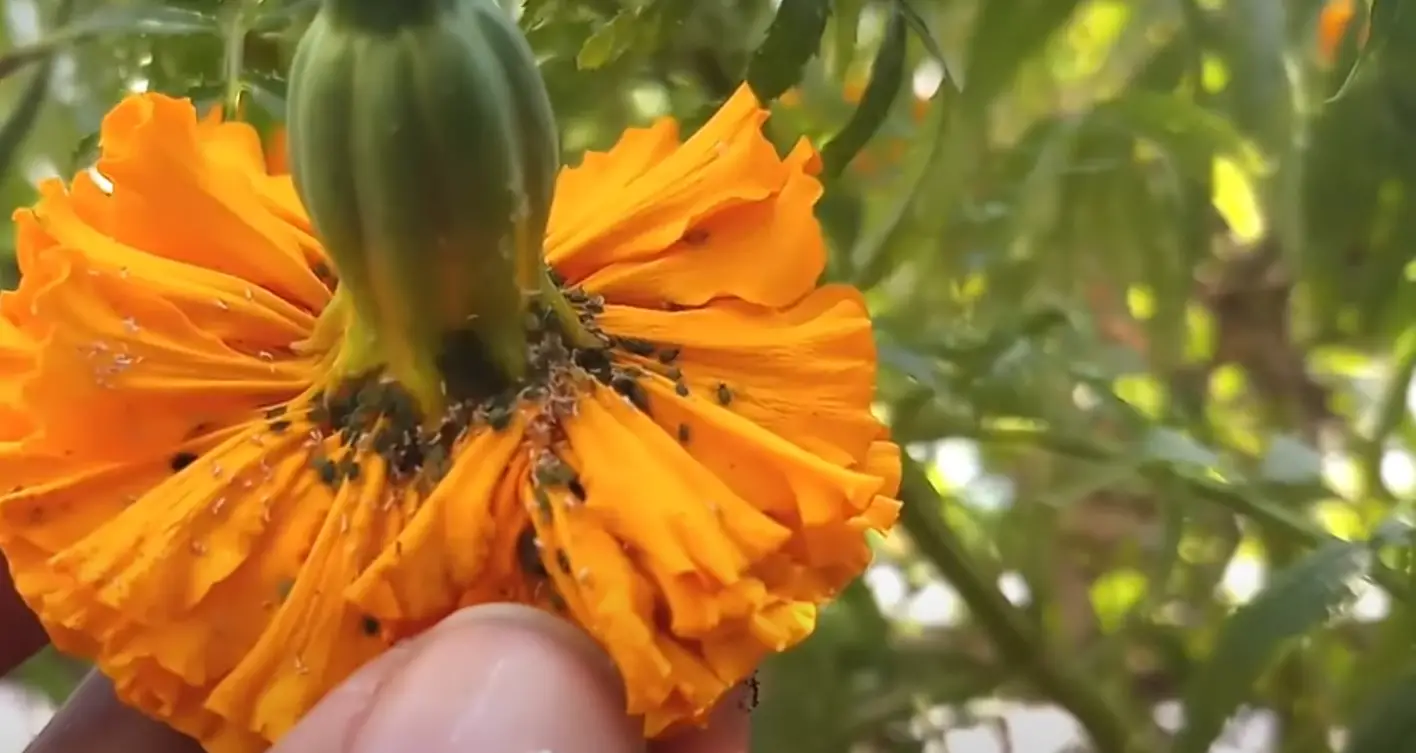
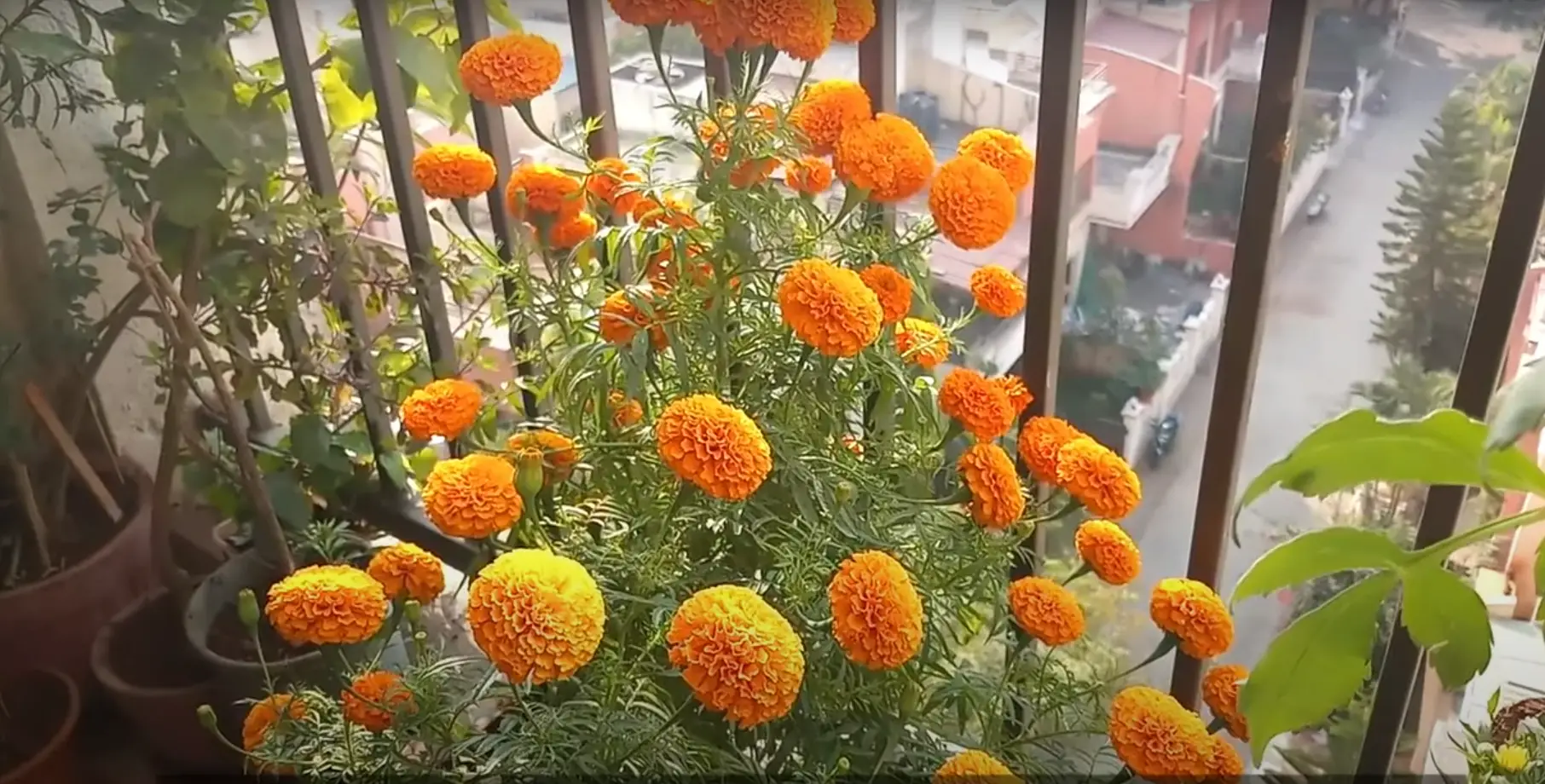




Leave a Reply
View Comments